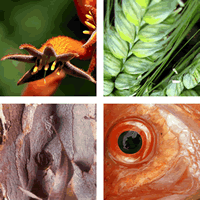2022/24 Grant Project
- Vector-borne disease ($150,000 over three years).
Ticks cause major disruptions to the livestock industry. Tick-borne diseases (TBD) have a significant impact on human and animal health. The recent incursion of the deadly TBD, canine monocytic ehrlichiosis, in northern WA and the NT in 2020 is an example of how rapidly an exotic disease can spread with an established tick vector. With Australia’s climate undoubtedly changing and habitat suitability for ticks increasing, this grant is researching the preparedness of the WA cattle industry, how to limit the spread of ticks and TBD, in addition to preventing inadvertent biosecurity incursions.
2022/23 Grant Project
- Determining the impacts of grazing oestrogenic clovers on cattle fertility ($150,000 over three years)
“Clover disease”, a syndrome associated with the high intake of phytoestrogens, which can negatively impact reproduction and health, is well documented in sheep. It remains under-researched as to whether this relationship occurs in cattle, and to what extent. This grant is researching if oestrogenic clovers have deleterious effects on cattle fertility or overall health
2014/15 Grant Project
- Define the extent and epidemiology of Theileria orientalis infection in cattle in south-coastal areas of Western Australia — Department of Agriculture and Food, Western Australia. July 2014 – June 2015 ($50,000).
Bovine theileriosis is an arthropod-borne disease resulting in severe anaemia in both dairy and beef herds. The disease was diagnosed in WA for the first time in April 2013. This project examined the extent of the disease in WA, and how the disease is transmitted under WA conditions.
2013/14 Grant Projects
- Development of TaqMan real-time PCR - Department of Agriculture and Food, Western Australia. July 2013 – June 2015 ($60,000).
This project designed and tested a TaqMan probe and primer to detect the organism that causes bovine Johne’s disease (Mycobacterium avium subsp. paratuberculosis). The development and use of a highly sensitive and specific diagnostic test for bovine Johne’s disease will assist routine diagnostics and support the claim that Western Australia remains free from the disease.
-
Exploring market options for ‘out of spec’ cattle in the pastoral areas of Western Australia - Global Livestock Solutions. July 2013 – December 2013 ($37,000).
A review of market options, specific to the pastoral industry of WA aimed to help these regions to better promote the industry on a regional basis. Competition for existing markets is intense. This project provided information that could be used by producers to assist in making good interim decision as markets develop and/or recover providing data to consider cause and effect and demonstrated how best to support industry recovery.
-
Market intelligence and consumer insight program customised for the WA beef industry; WA Beef Council. November 2013 – October 2014 ($45,000).
This project aimed to determine the value of existing market intelligence in supporting marketing decisions. The project identified and evaluated data, information, and services to determine the level of use and the value to the WA beef industry to make critical marketing decisions.
2012/13 Grant Projects
- Increasing the efficiency of phosphorus utilisation in kikuyu-based pasture systems (improving the cost of production) — Department of Agriculture and Food, Western Australia. July 2013 – June 2015 ($135,710).
This project aimed to improve the cost of production for beef enterprises across the southern and western beef production zone. It considered the efficiency of phosphate fertiliser use in kikuyu-based pastures, to reduce the cost of production for beef enterprises and potentially reduce the export of phosphorus from beef dominated agricultural landscapes to waterways.
- Release and evaluation of the Parkinsonia looper in Western Australia — CSIRO. January 2013 – December 2015 ($150,000)
Parkinsonia is one of Australia's twenty Weeds of National Significance (WoNS), largely due to its impact on the northern cattle industry. Infestations exclude the herbaceous layer, interfere with stock management, impede stock access to water and provide refuges for feral pigs. This research considered the biocontrol agent, 'Parkinsonia looper' Eueupithecia cisplatensis, to determine its ability to reduce the negative impacts of the weed by reducing the density and vigour of parkinsonia infestations.

